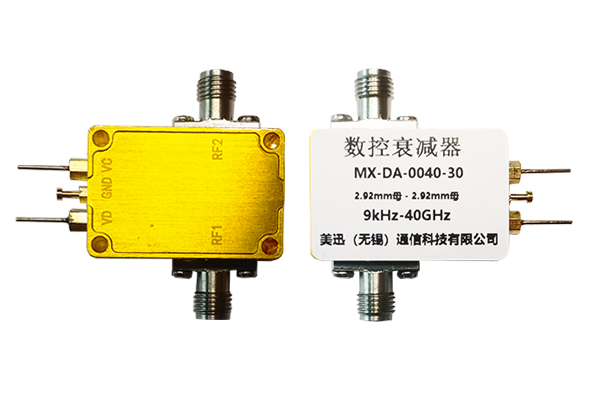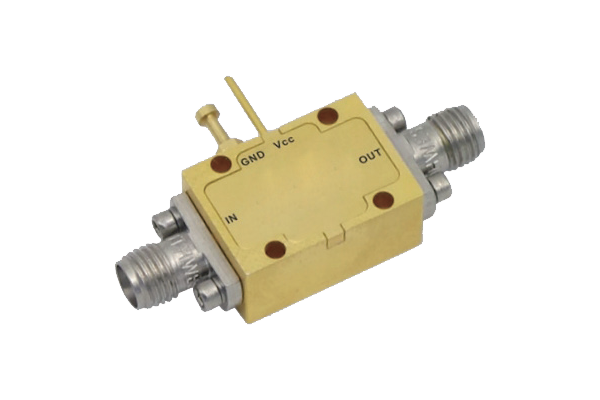
Pin diodes are established as major constituents in high-frequency electronics due to their natural device characteristics Their quick conductive to nonconductive switching and compact capacitance with limited insertion loss make them perfect for switches modulators and attenuators. The main mechanism of PIN diode switching uses bias voltages to regulate copyright flow through the device. Applying bias shifts the depletion-region extent within the p–n junction and so modifies conductivity. Setting different bias levels allows PIN diodes to perform high-frequency switching with minimal distortion
PIN diodes find placement inside complex circuit frameworks when precise timing and control is required They may be applied in RF filtering arrangements to selectively pass or reject particular frequency bands. Also their capacity to manage high power signals makes them applicable to amplifiers power dividers and signal generators. The push for compact efficient PIN diodes has led to broader use in wireless communications and radar systems
Analyzing the Performance of Coaxial Switch Designs
Designing coaxial switches involves a delicate process that must account for many interrelated parameters Key factors such as switch category operating band and insertion loss shape the coaxial switch performance. A good coaxial switch design aims to minimize insertion loss and maximize isolation across ports
Performance studies concentrate on return loss insertion loss and isolation measurements. Assessment employs simulation, analytical modeling and experimental measurement techniques. Precise performance analysis is essential for guaranteeing dependable coaxial switch function in applications
- Coaxial switch analysis typically employs simulation tools, analytical techniques and experimental procedures
- Temperature fluctuations impedance mismatch and manufacturing inconsistencies can strongly alter switch performance
- Recent advances emerging trends and novel developments in coaxial switch design focus on improving metrics while reducing size and power use
Low Noise Amplifier LNA Design Optimization
Improving LNA performance efficiency and gain is key to maintaining high signal fidelity across applications That involves meticulous transistor choice biasing arrangements and topology selection. A robust LNA layout minimizes noise inputs while maximizing amplification with low distortion. Simulation based analysis is critical to understand design impacts on LNA noise performance. Securing a low Noise Figure indicates superior capability to amplify while adding little noise
- Picking transistors known for minimal noise contribution is essential
- Adopting proper optimal biasing is essential to reduce noise creation in devices
- Circuit layout and topology have substantial impact on noise characteristics
Techniques of matching networks noise cancellation and feedback control contribute to improved LNA operation
Signal Switching Using Pin Diodes

Pin diode based switches enable adaptable and effective RF signal routing in various use cases The semiconducting switches operate at high speed to provide dynamic control over signal paths. PIN diodes’ low insertion loss and good isolation preserve signal quality through switching events. PIN diodes are used in antenna switch matrices duplexers and phased array RF systems
A control voltage governs resistance levels and thereby enables switching of RF paths. When off the diode’s high resistance isolates and blocks the RF path. The application of a positive bias reduces device resistance and permits RF passage
- Furthermore PIN diode switches boast speedy switching low power consumption and small size
Multiple configurable architectures and design schemes of PIN diode switches facilitate complex routing operations. Strategic interconnection of many switches yields configurable switching matrices for versatile path routing
Performance Efficacy Assessment of Coaxial Microwave Switches

Evaluation and testing of coaxial microwave switches is vital for verifying correct operation in electronic networks. Many various diverse factors determine the switches’ performance including insertion reflection transmission loss isolation switching speed and bandwidth. Comprehensive assessment includes testing these parameters under multiple operating environmental and test scenarios
- Furthermore moreover additionally the evaluation should consider reliability robustness and durability plus the ability to tolerate harsh environmental stresses
- Ultimately comprehensive evaluation outputs provide critical valuable and essential guidance for switch selection design and optimization for targeted uses
In-depth Review of Noise Suppression in LNA Circuits
LNAs serve essential roles in wireless RF systems by amplifying weak signals and curbing noise. The review supplies a broad examination analysis and overview of methods to diminish noise in LNAs. We investigate explore and discuss chief noise sources including thermal shot and flicker noise. We additionally assess noise matching feedback architectures and optimal bias strategies to curtail noise. The review emphasizes recent innovations including novel materials and architecture approaches that decrease noise figures. With a complete overview of noise minimization principles and methods the review supports the design of high performance RF systems by researchers and engineers
PIN Diode Uses in Rapid Switching Systems

PIN diodes display exceptional unique and remarkable characteristics making them suitable for high speed switching Low parasitic capacitance and small resistance enable quick switching to handle precise timing requirements. Moreover PIN diodes exhibit linear proportional responses to applied voltage enabling precise amplitude modulation and switching control. Their versatility adaptability and flexibility position them as suitable applicable and appropriate for a wide array of high speed use cases Examples include optical communications microwave circuits and signal processing devices equipment and hardware
Integrated Circuit Coaxial Switch Circuit Switching Technology
Coaxial switch IC integration provides critical improvements in signal routing processing and handling inside electronic systems circuits and devices. These integrated circuits are tailored to control manage and route signals via coaxial connections with high frequency performance and low insertion latency. IC miniaturization enables compact efficient reliable and robust designs ideal for dense interfacing integration and connectivity needs
- By rigorously meticulously and carefully implementing these techniques practitioners can achieve LNAs with remarkable noise performance for sensitive reliable electronics By rigorously meticulously and carefully implementing these techniques practitioners can low-noise amplifier achieve LNAs with remarkable noise performance for sensitive reliable electronics By rigorously meticulously and carefully implementing these techniques practitioners can achieve LNAs with remarkable noise performance for sensitive reliable electronics By meticulously carefully and rigorously applying these methods developers can produce LNAs with superior noise performance enabling sensitive reliable electronics
- Deployment areas span telecommunications data communications and wireless networking environments
- Integrated coaxial switches are valuable in aerospace defense and industrial automation use cases
- Consumer electronics audio video equipment and test measurement instruments utilize IC coaxial switching
Design Tips for Low Noise Amplifiers in mmWave Bands

LNA engineering for mmWave bands involves dealing with increased attenuation and heightened noise impacts. Component parasitics strongly influence mmWave performance mandating careful PCB layout and component choice. Input matching minimization and power gain maximization are critical essential and important for mmWave LNAs. Choosing appropriate active devices like HEMTs GaAs MESFETs or InP HBTs is key to achieving low noise at mmWave bands. Additionally the careful design and optimization of matching networks is essential to ensure efficient power transfer and good impedance match. Accounting for package parasitics is important since they can significantly affect LNA performance at mmWave. The use of low-loss lines and careful ground plane planning is essential necessary and important to limit reflections and sustain bandwidth
PIN Diode RF Characterization and Modeling Techniques
PIN diodes are vital components elements and parts used throughout numerous RF switching applications. Accurate precise and detailed characterization of these devices is essential for designing developing and optimizing reliable high performance circuits. It consists of analyzing evaluating and examining electrical voltage current characteristics including resistance impedance and conductance. Frequency response bandwidth tuning capabilities and switching speed latency or response time are also characterized
Moreover furthermore additionally building accurate models simulations and representations for PIN diodes is essential crucial and vital to predict their RF system behavior. Various numerous modeling approaches including lumped element distributed element and SPICE models are applicable. Choosing the proper model relies on the specific application requirements and the desired required expected accuracy
Sophisticated Advanced Methods for Minimal Noise Amplifiers
Designing low noise amplifiers necessitates detailed attention to topology and component choice to reach best noise figures. Recent advances in semiconductor tech have unlocked innovative groundbreaking sophisticated LNA design techniques that diminish noise greatly.
Among several numerous numerous these techniques are employing utilizing implementing wideband matching networks incorporating low noise transistors with high intrinsic gain and optimizing biasing scheme strategy approach. Additionally advanced packaging and thermal management practices are critical for minimizing external noise influences. Through careful meticulous and rigorous application of such methods engineers can design LNAs with top tier noise performance enabling dependable sensitive systems
